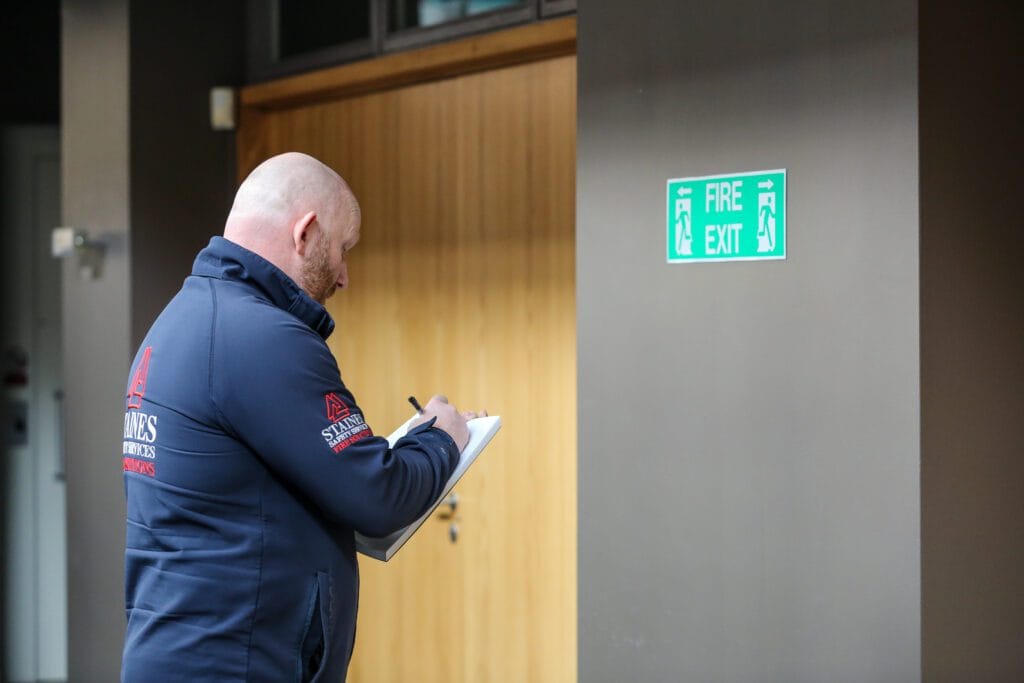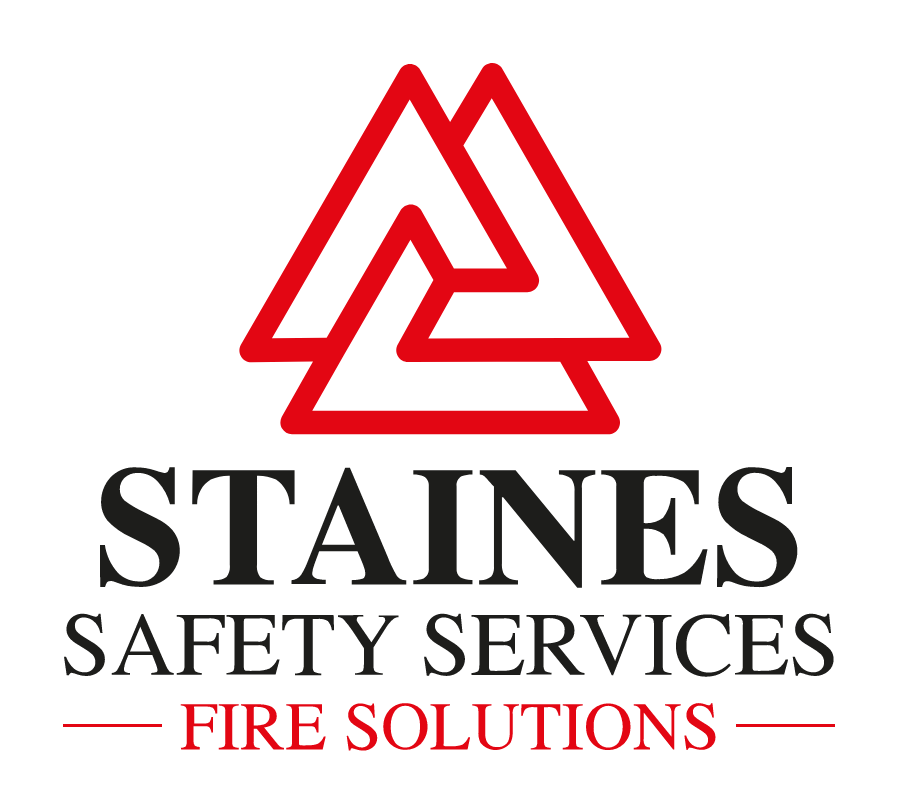
Who is Responsible for Fire Risk Assessments in the NHS?
Fire risk assessments in the NHS are a critical component of ensuring patient safety, staff protection, and overall compliance with UK fire safety regulations. With healthcare facilities like hospitals, clinics, and walk-in centres housing vulnerable individuals, understanding who is responsible for conducting these assessments is essential for preventing fire hazards and mitigating risks. It raises an important question: who is responsible for fire risk assessments in the NHS?
This blog post explores the key responsibilities under the Regulatory Reform (Fire Safety) Order 2005 (RRFSO) and the role of the “responsible person” in NHS settings. It also discusses best practices for NHS fire safety compliance. Whether you’re an NHS manager, facilities coordinator, or healthcare professional, this guide will help you navigate fire risk assessment requirements to maintain a safe environment.
Understanding Fire Risk Assessments in Healthcare
A fire risk assessment is a systematic evaluation of potential fire hazards in non-domestic premises, including NHS hospitals and clinics. It identifies risks such as faulty electrical equipment, oxygen storage issues, or blocked escape routes. Then, it assesses their likelihood and impact. Finally, it recommends mitigation measures like improved fire doors or enhanced evacuation plans. In the NHS, where progressive horizontal evacuation is often necessary due to immobile patients, these assessments are vital for protecting lives and ensuring business continuity.
Under the RRFSO, fire risk assessments must be “suitable and sufficient,” meaning they are thorough and proportionate to the premises’ complexity. For healthcare settings, guidance from Health Technical Memorandum (HTM) 05-03 provides specific advice on complex healthcare premises, emphasizing risks from medical gases and high-occupancy wards.
NHS trusts must conduct these assessments regularly, review them after changes (e.g., renovations or increased patient loads), and document findings. This is especially important since most facilities employ more than five people. Failure to comply can result in unlimited fines, enforcement notices from local fire authorities, or even imprisonment. This underscores the importance of NHS fire safety compliance. Recent data from NHS Digital shows a rise in fire incidents, with over 1,300 reported in 2022/23, highlighting the need for proactive risk management.
Legal Framework: The Regulatory Reform (Fire Safety) Order 2005 and NHS Obligations
The RRFSO, enforced since 2006, places fire safety duties on the “responsible person” for all non-domestic premises, including NHS facilities. This legislation simplifies previous fire safety laws and applies to workplaces, shared buildings, and healthcare environments. In England and Wales, it covers hospitals, GP practices, and mental health units, while Scotland and Northern Ireland have similar but distinct regulations. Key requirements include:
- Carrying out a fire risk assessment: Identify hazards, people at risk (e.g., elderly patients or those with disabilities), and control measures.
- Implementing fire safety measures: Such as alarms, extinguishers, emergency lighting, and clear escape routes.
- Providing training and information: Ensure staff understand evacuation procedures, including personal emergency evacuation plans (PEEPs) for vulnerable individuals.
- Review and record-keeping: Update assessments annually or after incidents, and maintain written records.
For the NHS, additional guidance comes from the NHS Firecode (HTM 05 series). This aligns with the RRFSO and addresses healthcare-specific risks like oxygen-enriched environments. The Building Safety Act 2022 further strengthens these duties. It requires a “golden thread” of fire safety information and collaboration in multi-occupied buildings. Non-compliance can lead to audits by local fire and rescue services. Authorities may issue notices or prosecute under the Health and Safety at Work Act 1974.

Who is the Responsible Person for Fire Risk Assessments in the NHS?
In NHS settings, the responsible person for fire risk assessments is typically the employer or someone with control over the premises, such as the NHS Trust Board, Chief Executive, or designated facilities manager. The ultimate accountability often rests with the NHS Trust Board. However, day-to-day responsibilities are delegated to operational roles to ensure effective NHS fire safety compliance. According to GOV.UK guidance, the responsible person could be:
- The employer (NHS Trust): Overall duty to ensure assessments are conducted.
- Building owner or occupier: For NHS-owned or leased properties.
- Facilities or estates manager: Often tasked with coordinating and implementing assessments.
- Department heads or ward managers: For specific areas, they must liaise and report findings.
In practice, for a hospital, the facilities manager or a designated fire safety advisor (e.g., Authorising Engineer for Fire) is commonly the responsible person. They must appoint a competent person—either internal staff with fire safety training or an external assessor—to perform the assessment if lacking expertise.
NHS policies, like those from Rotherham Doncaster and South Humber NHS Foundation Trust, emphasise that managers must ensure fire risk assessments cover all premises under trust control. Significant findings should be actioned within 28 days. If premises are shared (e.g., with private contractors), multiple responsible persons must cooperate, as per Article 22 of the RRFSO. In leased NHS facilities, the trust manager requests assessments from landlords for common areas.
| Role in NHS | Key Responsibilities for Fire Risk Assessments |
|---|---|
| NHS Trust Board/Chief Executive | Ultimate accountability; ensure policy compliance and resource allocation. |
| Fire Safety Manager/Advisor | Conduct or oversee assessments; develop action plans; liaise with fire services. |
| Facilities/Estates Manager | Coordinate maintenance of fire systems; monitor daily inspections and drills. |
| Ward/Department Managers | Identify local hazards; complete induction checklists; participate in drills. |
| All Staff | Report hazards; complete training; assist in evacuations. |
This structure ensures a collaborative approach to fire prevention in the NHS.
Delegating Responsibilities: Competent Persons and External Assessors
While the responsible person holds overall accountability, they can delegate the actual conduction of fire risk assessments to a competent person. Competence requires relevant training, experience, and knowledge of healthcare risks—often certified under schemes like BAFE SP205. In the NHS, this might be an internal fire safety advisor or an external professional fire risk assessor, especially for complex hospitals.
NHS guidance recommends external assessors for high-risk areas, such as those with oxygen systems or high-rise structures. Tools like the NHS Scotland Fire Manager module help track compliance. Staff must also undergo mandatory fire safety training at induction, covering topics like oxygen safety and PEEPs.
Best Practices for Conducting Fire Risk Assessments in the NHS
To achieve robust NHS fire safety compliance:
- Identify Hazards: Focus on healthcare-specific risks like medical gases, electrical medical devices, and linen storage.
- Assess Risks: Use a risk matrix to evaluate likelihood and severity, prioritizing vulnerable patients.
- Implement Controls: Install fire-resistant doors (minimum 30-minute rating), ensure compartmentation, and maintain alarms.
- Train and Drill: Conduct regular fire drills and training, recording outcomes in fire manuals.
- Review Regularly: Update after changes, such as new equipment or building works, and audit annually.
- Document Everything: Keep records accessible for inspections, including the assessor’s details.
Digital tools and templates from GOV.UK or the Fire Industry Association can streamline this process. For temporary setups like COVID-19 wards, specific guidance ensures assessments address unique risks.
Consequences of Non-Compliance and How to Avoid Them
Neglecting fire risk assessments in the NHS can lead to severe outcomes: fines up to unlimited amounts, closure of facilities, or criminal charges if harm occurs. Recent hospital fires underscore these risks. Additionally, enforcement by fire authorities has increased post-Grenfell. To avoid pitfalls, NHS trusts should integrate fire safety into broader health and safety policies. Collaborate with local fire services for advice, and outsource to accredited assessors when needed. Regular audits and a culture of reporting hazards are key to proactive compliance.
Conclusion: Prioritising Fire Safety in the NHS
Who is responsible for fire risk assessments in the NHS? Ultimately, it’s the NHS Trust and its designated responsible persons, such as facilities managers, who must ensure assessments are conducted by competent individuals to uphold RRFSO and NHS Fire code standards.
By embedding fire risk assessment requirements into daily operations, the NHS can safeguard patients, staff, and visitors while achieving full fire safety compliance. If you’re in the NHS and need support, consult your trust’s fire safety policy or engage a professional assessor. Staying vigilant with fire prevention in healthcare isn’t just a legal duty—it’s a commitment to lives. For more resources, visit GOV.UK’s fire safety guidance or HTM 05 documents.
